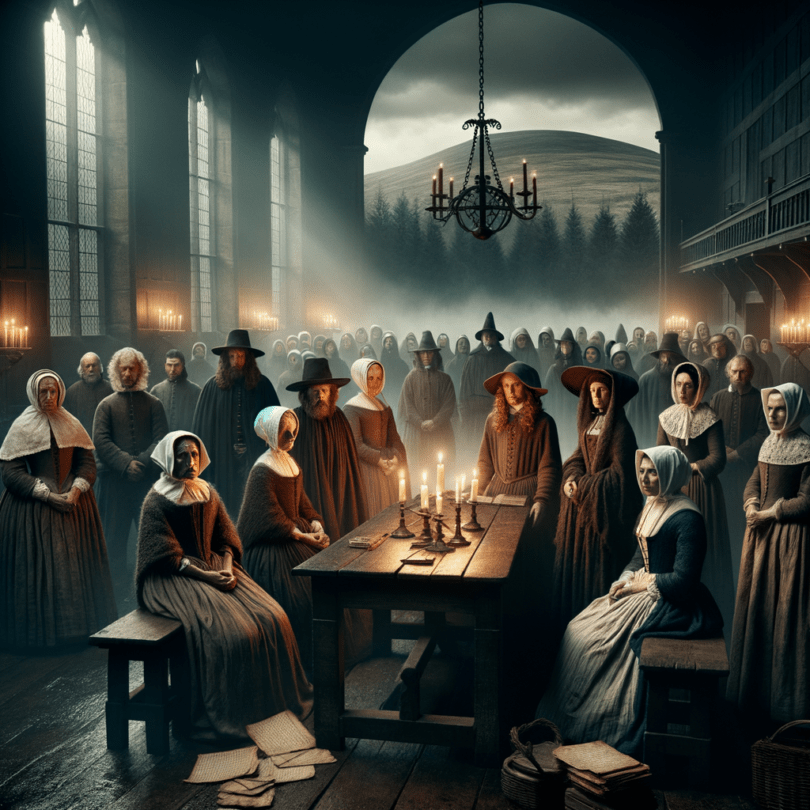Hey there, friend. So, let me take you on a bit of a time-travel journey back to the early 1600s—it’s a tale full of mystery, fear, and yes, a good dose of human madness. Ever heard of the Pendle Hill trials? Oh boy, once you dive into it, it’s like peeling back layers of a very emotional onion.
The first time I heard about this unbelievable story was during a history class, and let’s just say it blew my young mind. My history teacher spoke about the 1612 trials as if they were recounting a ghost story by the campfire, keeping us on edge. It totally gripped me, and I couldn’t shake it off. Not only did I dive deeper, but I got totally pulled into this world where witchcraft accusations were more than just whispers—they were screams of fear and misunderstandings fueled by the social and economic chaos of the time. The Pendle witches, I quickly realized, were victims and actors in a drama so very human it hurt my heart more than it satisfied my curiosity.
The Social and Economic Landscape
Picture yourself in early 1600s Lancashire. It’s cold, damp, and everything has this mysterious, foggy vibe. But it’s not just about the landscape—the people’s lives matched the rugged weather. Could you imagine living a life where every day feels like a battle against poverty and a rigid social system? A stark reality where only a few had wealth, and the rest just slogged away hoping to survive another day. Communities were tight-knit not by choice but out of sheer necessity to survive.
In this world, the fear of witches wasn’t just folklore or fantasy; it was like the boogeyman parents warned their kids about. King James I, bless his superstitious heart, was all about witchcraft being a threat—so much so that he wrote a whole book on it called “Daemonologie.” This fear seeped down to the common folks in Lancashire, where everyday misfortunes were all too quickly chalked up to witchcraft. I mean, if your cow stopped giving milk, well, heaven forbid you consider bad hay—a witch must have cursed it, right?
The Families at the Heart of the Trials
Now, diving a little deeper, I met some names that began to feel almost too real—like tragic actors in a play that you wish had a happier ending. There were the Demdikes and the Chattoxes, families we now closely relate to the Pendle witch trials. They lived on society’s edge in every sense—isolated farmsteads and whispers of the dark arts trailing them like a bad stink.
Elizabeth Southerns, known as old Demdike, was supposedly the ringleader. She was in her eighties when the trials happened—a ripe old age back then! Seeing her dragged into these accusations alongside her kids and grandkids—well, it made me wonder about the power of a shared, misconceived fear that snowballs into family tragedy. Then there were the Chattoxes, led by another older woman, Anne Whittle. Honestly, it seemed more like family feuds and misunderstandings rather than witches that fueled these fires.
I can’t help but feel for them, accused and vilified for maybe using a pinch of folk magic or just desperately trying to make sense of a nonsensical world. It’s heartbreaking, really, to think how deeply they might have believed in a magic that ultimately turned against them.
The Gathering Storm
So, things really slid off the rails thanks to a moment in March 1612. A young girl, Alizon Device from the infamous Demdike family, asked a pedlar for some pins. He refused, and—get this—she allegedly cursed him, and later he fell sick. Witchcraft was the first conclusion, no doubt helped by the local gossip mill working overtime.
Oh, and here’s where Thomas Potts comes in. He was basically the court’s glorified notetaker, but his book “The Wonderfull Discoverie of Witches in the Countie of Lancaster” read more like a thriller. Imagine a courtroom filled with shadows and curses flying left and right—it gave me goosebumps. What gnawed at me was how quick people were to accuse one another, even among friends and family. I wondered if in their shoes, anyone would do the same to save themselves. Honestly? Who knows.
The Trials and the Aftermath
Looking back, the trials were almost absurd in their simplicity. An innocent comment or gesture was spun into web-like proof of witchery. The power of belief back then—belief in the righteousness of eliminating witches—was, frankly, terrifying. For me, it’s the resilience of those accused that lingers. Ten people hung for crimes that were more societal scapegoating than fact.
Even in their barbaric simplicity, these trials left a mark, a scar of irrational injustice driven by fear. Did we learn from it? Well, maybe, but not before more misery in similar hunts for witches and their kin.
Reflecting on Human Nature
Witch trials, huh? They reflect something very raw in us—a tendency to jump to fear-fueled conclusions when we lack understanding. I kept wondering: Did those accused buy into their own guilt, twisted by the madness around them? And what about the families left behind? How did they rebuild? If Pendle is a mirror, then I can’t help but see how fear and uncertainty travel through time, lighting up our own dark corners still today.
These trials, they’re more than dusty history. They’re stomach-churning reminders of unchecked fear’s reach. As much as I’m fascinated by them, they frustrate me too. I try to offer an olive branch of compassion to those poor souls across time—because in their place, I have no idea how anyone else would have reacted. Isn’t it something to ponder?

